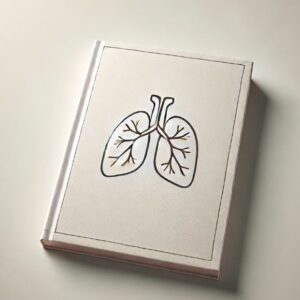Description
Device Therapy in Heart Failure
Device therapy is an integral component of managing heart failure (HF), particularly in patients who remain symptomatic despite optimal medical therapy or have specific cardiac conditions. It improves survival, reduces hospitalizations, and enhances the quality of life. Here’s a summary of the key devices used in heart failure treatment:
1. Cardiac Resynchronization Therapy (CRT)
- Indication: HF patients with reduced ejection fraction (HFrEF), typically <35%, despite optimal medical therapy, and a wide QRS complex (>130 ms) on the ECG, particularly with a left bundle branch block (LBBB) pattern.
- Mechanism: CRT uses biventricular pacing to improve the coordination of the heart’s contractions, resynchronizing the left and right ventricles.
- Outcome: It reduces symptoms, hospitalizations, and mortality, particularly in those with LBBB.
- Types:
- CRT-P (Pacing): For patients who only need resynchronization.
- CRT-D (Defibrillator): For patients who need resynchronization and are at risk for sudden cardiac death.
| Parameter | CRT-P | CRT-D |
|---|---|---|
| Indication | Symptomatic HF with LBBB, QRS >130 ms | Symptomatic HF with LBBB, QRS >130 ms and risk of sudden cardiac death |
| Benefit | Symptom relief, reduced hospitalizations, improved survival | Symptom relief, reduced hospitalizations, improved survival, protection against sudden cardiac death |
2. Implantable Cardioverter-Defibrillator (ICD)
- Indication: Patients with HF and significant risk of sudden cardiac death due to ventricular arrhythmias, typically with HFrEF (EF ≤35%) and New York Heart Association (NYHA) Class II or III symptoms.
- Mechanism: ICD monitors heart rhythms and delivers shocks or anti-tachycardia pacing to terminate life-threatening arrhythmias like ventricular tachycardia or ventricular fibrillation.
- Outcome: Reduces the risk of sudden cardiac death in eligible HF patients.
| Indication | ICD Type | Benefit |
|---|---|---|
| Primary prevention in HFrEF | Single- or dual-chamber ICD | Reduces sudden cardiac death risk |
| Secondary prevention (survivors of sudden cardiac arrest) | ICD | Prevents recurrent arrhythmias, improves survival |
3. Left Ventricular Assist Devices (LVADs)
- Indication: Patients with end-stage heart failure who are either ineligible for heart transplantation or as a bridge to transplantation.
- Mechanism: LVADs mechanically assist the left ventricle in pumping blood to the rest of the body, helping maintain adequate circulation.
- Outcome: Improves survival and quality of life in patients with severe heart failure, but complications such as bleeding, infection, and thrombosis are common.
| Device | Indication | Outcome |
|---|---|---|
| LVAD | Bridge to transplantation or destination therapy | Improves survival in end-stage HF |
4. Baroreceptor Activation Therapy (BAT)
- Indication: HF patients with reduced ejection fraction who remain symptomatic despite optimal medical therapy.
- Mechanism: BAT activates the baroreceptors, reducing sympathetic nervous system activation, lowering blood pressure, and improving heart function.
- Outcome: Early studies show improvement in symptoms, exercise capacity, and quality of life.
5. Vagus Nerve Stimulation (VNS)
- Indication: HF patients, particularly those with HFrEF, where conventional therapies fail to achieve adequate symptom control.
- Mechanism: VNS modulates the autonomic nervous system by reducing sympathetic overactivity and enhancing parasympathetic tone.
- Outcome: Limited evidence so far, but some studies suggest symptomatic improvement.
6. Transcatheter Mitral Valve Repair (MitraClip)
- Indication: HF patients with significant secondary (functional) mitral regurgitation due to left ventricular dysfunction.
- Mechanism: The MitraClip device is used to clip together a portion of the mitral valve leaflets, reducing regurgitation.
- Outcome: Reduces hospitalizations and improves quality of life in selected HF patients.
Summary of Device Therapy in Heart Failure:
| Device | Indication | Key Benefit |
|---|---|---|
| Cardiac Resynchronization Therapy (CRT) | HFrEF with LBBB and QRS >130 ms | Symptom improvement, mortality benefit |
| Implantable Cardioverter-Defibrillator (ICD) | HFrEF patients at risk of sudden cardiac death | Reduces risk of sudden cardiac death |
| Left Ventricular Assist Device (LVAD) | End-stage HF or as a bridge to transplant | Prolongs survival, enhances quality of life |
| Baroreceptor Activation Therapy (BAT) | HFrEF patients symptomatic despite optimal therapy | Reduces sympathetic activity, improves symptoms |
| Vagus Nerve Stimulation (VNS) | HFrEF patients with persistent symptoms | Modulates autonomic function, symptom relief |
| MitraClip | HF with secondary mitral regurgitation | Reduces regurgitation, improves quality of life |
Device therapy in heart failure represents a significant advancement in managing patients, particularly those with advanced symptoms or specific cardiac conditions. Optimal patient selection and appropriate timing of device implantation are critical to maximizing clinical outcomes.





Reviews
There are no reviews yet.